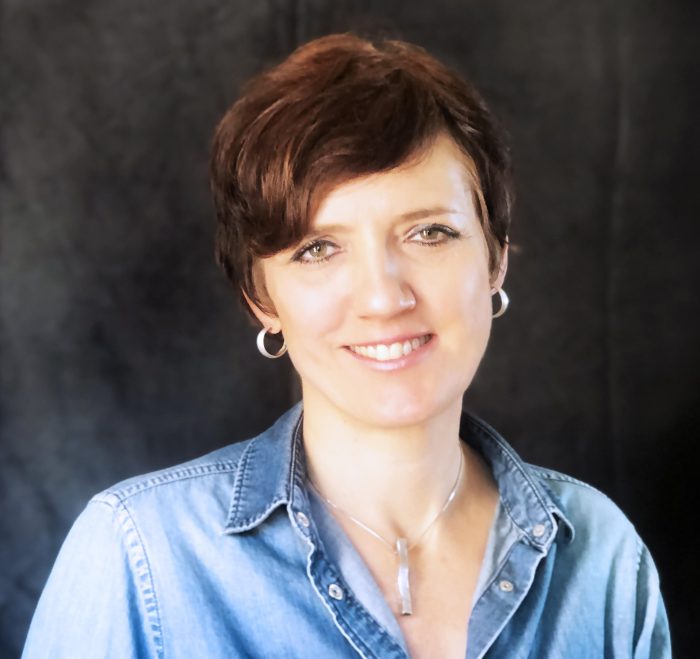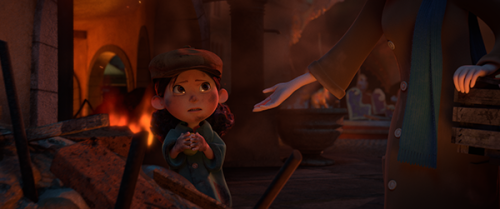By Ian Kintzle

Join filmmaker Cinzia Angelini and Skywalker Sound’s Liz Marston for a conversation about the sound of Cinzia’s riveting animated short film, Mila.
Though your film takes place in Italy during WWII, you’ve spoken about how the film is meant to feel contemporary. Can you speak to that?
Like everyone, I’ve been really glued to the news since the beginning of the conflict in Ukraine. It feels like history is repeating itself. My mother lived through it, and she keeps going back to how WWII started and how what’s happening in Ukraine feels similar. I always knew Mila would feel relevant and universal, because war is always present throughout history.
As you were beginning to plot the film out, how early were you exploring sound, and how it might affect the storytelling?
I always treated the message in the film Mila as a universal one, so I always treated sound as something contemporary and universal. In working with our composer, Flavio Gargano, I knew early on that some sequences would be music-driven, while others would be heavily sound-driven. The second and third sequence comprised the attack and the bombing, so those especially were heavily sound-driven, and I thought of those early in the writing process. I wanted the audience to see immersed, and as close as possible to what it would feel like to actually be there. Sound is such an important aspect when making a film.
Early on when you were crafting animatics, did you reference old war footage?
Yes, I looked at a lot of documentaries and old newsreel footage on the war. It’s important to really get into the subject matter in order to convey it realistically. I also used what my mom remembered from WWII. She remembers the explosions, and people crying out more than anything. And when you’re a kid, and you have to go through that level of trauma, it’s heartbreaking. And it doesn’t matter where you’re from in the world, that feeling is the same. Sound played an important part in helping to convey that.
When you’re crafting sound, especially if it’s something historical, sometimes a person’s recollection of a sound can resonate even more than trying to replicate a recording.
That’s completely right, and that’s what we tried to convey.

Liz, you were re-recording mixer on Mila for Skywalker Sound. How early in the process did you become involved?
I jumped in for the mix portion of the process. There was another sound designer, Chris Pinkston, who sound designed it, alongside a few other effects editors. So they sent us the initial session, and we mixed it from there.
Can you talk about your creative process and what you were looking to achieve with the mix?
We had creative meetings early on and discussed what we wanted to feel when we watched the film. It’s important that sound helps serve the story, so it’s a balance of music and sound effects, asking questions of when to lean in, and when to back away from each.
Were you able to utilize Skywalker Sound’s library to supplement what Chris Pinkston had already crafted?
We utilized some things here and there, but what they brought to us was very fleshed out.
Cinzia, thinking of films that rely heavily on sound, and how sound can sometimes become its own character—especially on an animated film where everything is created from scratch—can you speak to a bit of that process?
I loved A Quiet Place, and its sequel. I think they were both brilliant and I think did a great job of relying on sound versus dialogue. For Mila, the world, and the sounds that embody it, are truly a character and influence everything going on in the story.
And Liz, can you expand on that in relation to your work?
I really like that we’re telling the story and leaning in on these sound moments. The music drives us through these emotions, and we can see how they’re affecting our characters just by looking at their faces. And when lean in on these sound effects elements, like the bombers for example, they are very loud and very close. The play between these two elements helps drive the story.
Cinzia, I love the idea of how you can craft sound envelopes for different characters, where you get to step in and hear the world the way they hear it, versus other characters.
We did that a bit for the sound of war itself. We didn’t have soldiers, so we worked to create this abstract sound of war for the bombers. We did that by mixng together the sound of dozens of different bomber planes, giving us the result of what we were after. An airplane expert wouldn’t be able to pinpoint the exact engine tone of our bombers.

Liz, I’m curious, in regards to the mix, what opportunities or challenges came up that were fun to tackle?
Like a lot of mixes we’ve done over the last two years, it was during the pandemic. I was on the stage here at Skywalker Sound, but Cinzia was remote, as was our sound designer and composer. Technology makes it so easy though, especially with some of the team working from Italy, because we were able to hop on and and discuss the mix as a group.
And can you discuss any software or plugins that you find useful during the process?
Every project is different, but for this one we mixed it in Pro Tools so it would sound the same in his studio as well. That’s something we always take into consideration. We have a lot of mixing boards that are more analog, so if I mix with that, it won’t sound the same anywhere else without that same console. There’s a few reverb plugins that I love to use.
I love hearing about favoritism among reverb plugins.
It’s a very polarizing subject, yes. [laughs]
Short films are incredible in that you can tell a story that is just as affecting as a feature-length picture.
Liz, do you have advice for people that are interested in telling a story with sound in a medium like this?
Collaboration is key. The more people that can put in their ideas, the better the end result will be. Collaborating with people who have certain strengths, whether it’d dialogue, effects, composing. Talk to as many people as you can, and try to get as many people involved as you can, and then go from there.
Cinzia, in looking back on your film, what is the message you’d like people to take away?
The trauma inflicted on children during war is significant and lasting. They can be watching their favorite cartoon, and then suddenly they are without home. One bag, in the cold, walking for miles to find safety. I think if everyone can try and put themselves in the shoes of refugees during war, and have some of that empathy, then the film has done its job.
To learn more, visit www.milafilm.com